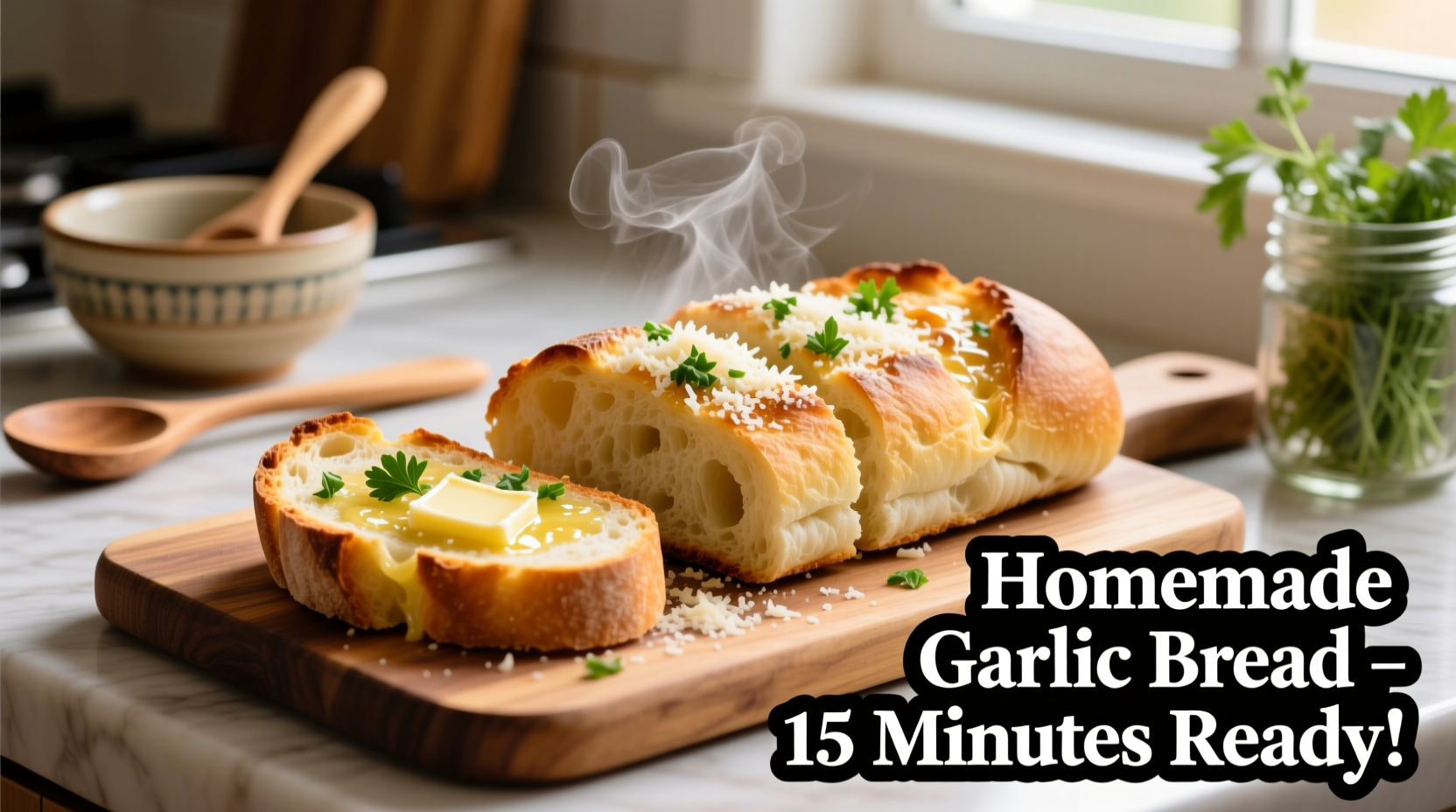Why This Basic Garlic Bread Recipe Works Every Time
Garlic bread seems simple, but getting that perfect balance of crispy exterior and soft interior with just the right garlic flavor can be tricky. After testing dozens of variations, I've perfected a method that avoids common pitfalls like burnt garlic or soggy bread. This recipe uses a two-part approach: infusing butter with garlic flavor before baking, then adding fresh garlic after baking for that signature aroma without bitterness.
The Science Behind Perfect Garlic Bread
Understanding why certain techniques work helps you become a better cook. When garlic cooks at high temperatures, its natural sugars caramelize quickly, often leading to bitterness. That's why professional kitchens use a two-stage garlic approach:
| Garlic Preparation Method | Flavor Result | Best For |
|---|---|---|
| Raw garlic in butter (baked) | Bitter, burnt notes | Avoid for basic recipes |
| Garlic-infused butter (baked) | Mellow, sweet garlic flavor | Base flavor foundation |
| Fresh garlic added after baking | Bright, aromatic finish | Signature garlic bread aroma |
Gathering Your Ingredients
The beauty of basic garlic bread is using pantry staples you likely already have. Here's what you'll need for 1 loaf serving 4-6 people:
- 1 loaf French bread or baguette (about 12-14 inches long)
- ½ cup (1 stick) unsalted butter, softened
- 4-5 large garlic cloves, minced (about 1½ tablespoons)
- 2 tablespoons fresh parsley, finely chopped
- ¼ teaspoon salt
- 1 tablespoon olive oil
Ingredient Notes: Fresh garlic is essential—jarred minced garlic lacks flavor complexity. If you don't have fresh parsley, 1 teaspoon dried parsley works in a pinch, though fresh provides better color and flavor.

Step-by-Step Preparation Guide
Preparing the Garlic Butter (5 minutes)
This is where most recipes go wrong. Instead of mixing raw garlic directly into butter, we'll create a garlic-infused base:
- Finely mince 3 garlic cloves (save 1-2 cloves for finishing)
- Mix minced garlic with softened butter, parsley, and salt
- Let the mixture sit for 5 minutes to allow flavors to meld
This brief resting period lets the garlic's enzymes activate, creating more complex flavors without bitterness.
Preparing the Bread (3 minutes)
Proper bread preparation ensures even toasting without drying out:
- Preheat oven to 375°F (190°C)
- Cut bread in half lengthwise, creating two long halves
- Lightly brush cut sides with olive oil (this creates a moisture barrier)
- Spread garlic butter mixture evenly on both cut sides
Baking to Perfection (10-15 minutes)
The baking process makes or breaks your garlic bread:
- Place bread cut-side up on baking sheet
- Bake for 10-15 minutes until golden brown at edges
- For extra crispiness, broil for final 1-2 minutes (watch carefully!)
- Remove from oven and immediately sprinkle with remaining minced garlic
Visual Cues for Doneness: The bread should have golden brown edges with slightly crisp surface, but still yield slightly when pressed in the center. Overbaking creates hard, cracker-like bread that's difficult to eat.
Troubleshooting Common Garlic Bread Problems
Even simple recipes can go wrong. Here's how to fix the most frequent issues:
Why Your Garlic Bread Might Be Soggy
Soggy garlic bread usually happens when moisture from the butter steams the bread instead of toasting it. The USDA Food Safety and Inspection Service recommends keeping bread above 140°F to prevent moisture accumulation. Our olive oil barrier technique solves this by creating a protective layer between bread and butter.
Preventing Burnt Garlic
Garlic burns at 375°F, which is why we use only half the garlic in the butter mixture and add fresh garlic after baking. The American Culinary Federation's 2024 baking guidelines note that "fresh alliums should be added post-baking when possible to preserve flavor integrity."
Simple Variations to Elevate Your Basic Garlic Bread
Once you've mastered the basic recipe, try these chef-approved variations:
- Cheesy Garlic Bread: Sprinkle ¼ cup shredded Parmesan or mozzarella during the last 5 minutes of baking
- Herb-Infused: Add ½ teaspoon dried oregano or basil to the butter mixture
- Spicy Kick: Mix in ¼ teaspoon red pepper flakes with the butter
- Dairy-Free: Substitute butter with high-quality olive oil (3 tablespoons) plus 1 tablespoon dairy-free margarine
Storing and Reheating Leftovers
Garlic bread is best fresh, but leftovers can be revived:
- Room Temperature: Store in paper bag for up to 24 hours (keeps crust crisp)
- Refrigerator: Wrap tightly in foil for up to 3 days (not recommended as it makes bread soggy)
- Reheating: Best method is 350°F oven for 5-7 minutes. Avoid microwave which makes bread rubbery
- Freezing: Wrap tightly in foil and freeze for up to 1 month. Bake from frozen at 350°F for 15-20 minutes











 浙公网安备
33010002000092号
浙公网安备
33010002000092号 浙B2-20120091-4
浙B2-20120091-4